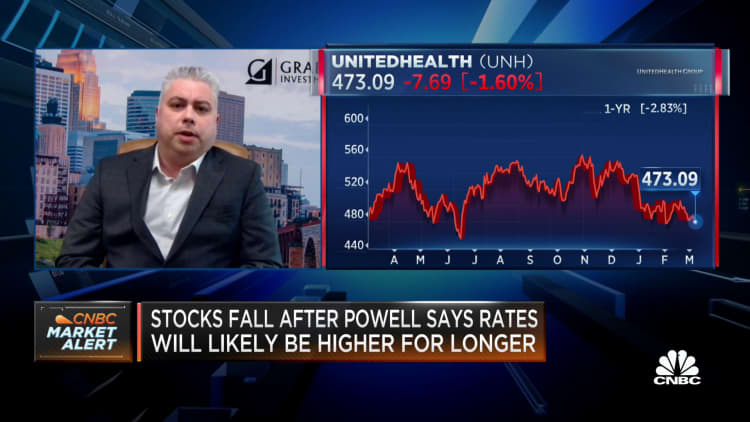Banking
Where do banks make the most money?

Table of Contents
Where do banks make the most money?
There’s more to the story than just customers getting loans from banks and paying interest on those loans. Have you ever pondered how financial institutions like banks generate revenue?
The banking industry as a whole can be quite complicated, but the various ways in which financial institutions generate revenue can be surprisingly simple to grasp.
The two primary methods by which banks generate revenue are going to be broken down here, along with some essential information regarding each method.
How Do Banks Make Money?
There’s more to the story than just customers getting loans from banks and paying interest on those loans. Have you ever pondered how financial institutions like banks generate revenue?
The banking industry as a whole can be quite complicated, but the various ways in which financial institutions generate revenue can be surprisingly simple to grasp.
The two primary methods by which banks generate revenue are going to be broken down here, along with some essential information regarding each method.
Save more, spend wisely, and stretch your dollars to go further..
The services that banks offer bring in revenue for the institutions. They do this by charging customers interest on the various loans they offer as well as by collecting bank fees.
Banks, which serve as hubs for monetary transactions and financial services, lend customers money and are responsible for the safety of that money; however, how do banks make money?
Banks, like any other type of for-profit business, make a profit by charging customers money for the services and products they offer in the banking industry.
The interest earned on loans and the fees associated with various banking services are the two primary sources of revenue for financial institutions.
Continue reading to learn more about these primary services, as well as the specific ways in which banks profit from providing them. While you’re at it, educate yourself on effective methods of personal finance management, which will prevent financial institutions from profiting off of your situation.
How banks make money
Banks generate revenue in two ways: commercial banking and investment banking.
Commercial banking incorporates products such as accounts and mortgages, whereas investment banking encompasses services such as corporate transactions and wealth management.
Here’s what each of these terms means, as well as the various revenue streams that banks create within them.
Commercial banking
Commercial banking refers to the various banking products and services that are offered by financial institutions to commercial customers, including both individuals and businesses.
These financial services include checking and savings accounts, mortgages, auto loans, personal loans, credit cards, lines of credit, and a variety of other financial products and options.
In addition, they include ancillary services such as safe deposit boxes, brokerage accounts, financial planning, and a great deal more.
Investment banking
Investment banking is a term that refers to the services that a bank offers to corporations, governments, high-net-worth individuals, and other entities that extend beyond the activities that are involved in commercial banking.
The services provided by investment banks to their clients include advising them on mergers and acquisitions, corporate finance transactions, and corporate restructurings.
They engage in activities such as proprietary stock trading, bond trading, and currency trading in addition to facilitating things like initial public offerings (IPOs) and debt offerings. And as a final point to make, investment banks provide services of wealth management to businesses as well as individuals who have a high net worth.
Fees
There are many different ways for banks to generate revenue, the vast majority of which can be categorized as either interest or fee income.
Let’s begin by taking a look at the prices. Both the commercial banking and investment banking facets of a financial institution’s business are able to accrue a wide variety of fees for a variety of different services.
The following is an outline of some of the most typical types of fees:
Net interest margin
When it comes to commercial banking, the primary source of revenue generation is known as the net interest margin.
The term “net interest margin,” or NIM, refers to the spread that exists between the interest income that a bank receives from loans and the interest that the bank pays out on deposits once the costs of the bank have been taken into account.
As an illustration, if a financial institution has a loan portfolio worth $100 million and realizes a net income of $2 million from those loans, then the financial institution has a net interest margin of 2%.
The efficiency of a particular banking institution, as well as the types of lending that a bank specializes in, are two of the primary determinants of the net interest margins that a bank can offer. They are also dependent on the conditions of the market at the time.
In particular, when market interest rates are low, net interest margins tend to be low as well, while when rates are high, net interest margins tend to be high.
How credit unions work
Credit unions, as opposed to traditional banks, are organizations that are run for charitable purposes. They, like banks, collect interest and other fees from their customers, but unlike banks, their primary objective is typically to simply cover their operating costs rather than to generate significant profits for their shareholders.
The members of a credit union are technically its owners, and the credit union’s primary objective is to provide its members with the lowest possible rates, fees, and yields on deposits while still being able to cover its operating expenses.
Not all banks make money in both ways
Many financial institutions are only engaged in commercial banking and do not provide investment banking services.
This is quite common among regional and local banks, but there are some large banks that operate primarily like savings-and-loan institutions.
This is a common practice among savings-and-loan institutions. One example of a large bank that does not engage in investment banking is US Bancorp (NYSE:USB), which is a publicly traded company.
Although Wells Fargo (NYSE:WFC) does engage in some investment banking activities, the majority of its revenue comes from its commercial banking operations.
On the other hand, investment banking is the primary focus of certain banks.
Goldman Sachs (NYSE:GS) and Morgan Stanley (NYSE:MS) are the two largest financial institutions that primarily focus on the investment banking side of the business.
However, finding a pure investment bank in today’s market is becoming increasingly difficult. Last but not least, many of the larger banks employ a roughly equal mix of employees from both categories.
Questions People Are Asking
How do financial institutions make most of their money?
Banks, like any other type of for-profit business, make a profit by charging customers money for the services and products they offer in the banking industry.
The interest earned on loans and the fees associated with various banking services are the two primary sources of revenue for financial institutions.
Why do banks make so much money?
The vast majority of a bank’s profits come from the collection of interest payments from borrowers of loans such as mortgages, car loans, and personal loans. These loans are made available to individual customers.
Loans are available for both small and large businesses from a variety of financial institutions.
Where do banks borrow money from?
It has the option of borrowing from another bank, as well as borrowing directly from the Federal Reserve.
Borrowing money from a different bank is the option that will cost you less money, but the majority of commercial banks choose to borrow money from the discount window because of how easy it is. This is especially true when the loan being taken out is only an overnight loan to satisfy reserve requirements.
Do banks create money when they loan?
When a bank extends credit to a customer, that bank effectively creates new money.
The paper money that bears the seal of the Federal Reserve is not the same thing as the money that is created by banks.
When you use an automated teller machine (ATM) to check the balance of your account, the amount of electronic money that you have will be displayed on the screen.
The method of accounting that is utilized by banks in the process of loaning money out allows for the creation of new money.
Can banks loan money they don’t have?
Banks are thought of as financial intermediaries that connect savers and borrowers. However, banks actually rely on a fractional reserve banking system whereby banks can lend more than the number of actual deposits on hand.
Fact Check
We strive to provide the latest valuable information for our readers with accuracy and fairness. If you would like to add to this post or advertise with us, don’t hesitate to contact us. If you see something that doesn’t look right, contact us!
Insurance
Fixed Annuities Explained: Pros, Cons and How They Work

Table of Contents
Fixed Annuities Explained: Pros, Cons and How They Work
When it comes to financial planning, retirement planning is essential. There are several investment options available in the market, including fixed annuities.
In this article, we will delve into the basics of fixed annuities, their advantages and disadvantages, and how they work.
What Are Fixed Annuities?
Fixed annuities are a type of investment contract between an individual and an insurance company.
An individual makes a lump-sum payment or several payments to the insurance company. The insurance company promises to provide a fixed interest rate and regular payments to the individual for a specific period.
Types of Fixed Annuities
There are several types of fixed annuities, including:
- Immediate Annuities: This annuity type provides regular income payments immediately after the individual makes a lump-sum payment to the insurance company.
- Deferred Annuities: This annuity type provides regular income payments at a later date, either after a specific number of years or when the individual reaches a specific age.
- Fixed-Indexed Annuities: This annuity type provides a fixed interest rate plus additional interest based on the performance of a stock market index.
Pros of Fixed Annuities
Fixed annuities have several advantages, including:
- Guaranteed Income: Fixed annuities provide a guaranteed stream of income for a specific period.
- Stable Returns: Fixed annuities provide stable returns compared to other investment options in the market.
- Tax-Deferred Growth: Fixed annuities provide tax-deferred growth on the investment until the individual withdraws the money.
Cons of Fixed Annuities
Fixed annuities have some disadvantages, including:
- Low Returns: Fixed annuities provide low returns compared to other investment options in the market.
- Limited Flexibility: Fixed annuities have limited flexibility when it comes to withdrawing the money before the end of the contract period.
- Inflation Risk: Fixed annuities do not account for inflation, and the purchasing power of the regular payments may decrease over time.
How Do Fixed Annuities Work?
When an individual invests in a fixed annuity, the insurance company invests the money in bonds or other fixed-income securities. The insurance company then provides regular payments to the individual, which includes a fixed interest rate and a return of the principal amount.
Who Should Invest in Fixed Annuities?
Fixed annuities are suitable for individuals who:
- Want Guaranteed Income: Fixed annuities provide a guaranteed stream of income for a specific period, making them suitable for individuals who want a stable income during retirement.
- Want Low-Risk Investments: Fixed annuities provide stable returns and have low risk compared to other investment options in the market.
- Have a Long-Term Investment Horizon: Fixed annuities are suitable for individuals with a long-term investment horizon and can wait for several years before receiving regular income payments.
How to Buy Fixed Annuities?
Fixed annuities can be purchased through insurance companies, brokers, or financial advisors. It is essential to compare different annuity contracts and understand the terms and conditions before investing in a fixed annuity.
Conclusion
Fixed annuities are a popular investment option for individuals planning for retirement.
They provide a guaranteed stream of income for a specific period, have stable returns, and provide tax-deferred growth.
However, they also have some disadvantages, including low returns and limited flexibility. It is essential to weigh the pros and cons before investing in a fixed annuity.
FAQs
What happens to a fixed annuity when the individual dies?
- If the individual dies during the contract period, the remaining
What happens to a fixed annuity when the individual dies?
- If the individual dies during the contract period, the remaining balance may be paid to the designated beneficiary.
Can the interest rate on a fixed annuity change over time?
- No, the interest rate on a fixed annuity is fixed for the duration of the contract.
Can an individual withdraw money from a fixed annuity before the end of the contract period?
- Yes, but there may be penalties and fees for early withdrawals.
Are fixed annuities insured by the government?
- No, fixed annuities are not insured by the government but are backed by the financial strength of the insurance company.
Are there any tax implications when an individual withdraws money from a fixed annuity?
- Yes, withdrawals from fixed annuities may be subject to taxes and penalties, depending on the individual’s age and the duration of the contract. It is important to consult a tax advisor before making any withdrawals.
Fact Check
We strive to provide the latest valuable information for our readers with accuracy and fairness.
If you would like to add to this post or advertise with us, don’t hesitate to contact us. If you see something that doesn’t look right, contact us!
Insurance
7 Methods Legacy Insurance coverage Know-how Could Be Holding you Again

[ad_1]
This put up is a part of a collection sponsored by AgentSync.

The Southwest Airways disaster that rounded out 2022 could have been a nightmare for everybody concerned, however there was one optimistic that got here out of it. The debacle helped begin a bigger dialog on a subject we’ve been speaking about for fairly a while now: the issue with outdated expertise. As we start the brand new 12 months, we anticipate professionals throughout all industries taking a better take a look at the cracks of their technological infrastructure and legacy techniques.
Table of Contents
Legacy expertise and the insurance coverage trade usually go hand in hand
The insurance coverage trade is not any stranger to outdated expertise. As a legacy trade, legacy tech is par for the course. It wasn’t till the COVID-19 pandemic started inflicting enterprise shutdowns that many insurers had been mainly compelled to replace their processes and softwares to be able to proceed working beneath new security pointers.
In some ways, the COVID-19 pandemic was the catalyst for the insurance coverage trade’s digital revolution. However, numerous carriers and businesses are nonetheless counting on the outdated manner of doing issues. Why is that?
The reply isn’t easy. Some could also be apprehensive about the fee whereas others are extra involved with the problem of changing legacy techniques. Some are simply afraid the change might be an excessive amount of for workers and that it’ll trigger extra enterprise disruption than it’s price. Nevertheless, if Southwest’s breakdown taught us something, it’s that no excuse is price risking the harm that outdated expertise may cause to your group, staff, and clients.
So, with out additional ado, listed here are seven methods your legacy system could also be inflicting your insurance coverage enterprise extra hurt than good.
**We’ll be exploring these issues from an insurance coverage perspective (as that’s our experience), however many of those issues apply to companies in any trade that also depend on outdated expertise.
1. Legacy expertise is cost-heavy
One of many extra widespread roadblocks we hear from insurance coverage specialists who’re nonetheless working their enterprise on outdated techniques is {that a} new resolution is simply not within the price range. Whereas it’s true that the upfront prices of including extra fashionable instruments to your tech stack could also be substantial, they’re nothing in comparison with the price of sustaining legacy techniques. Selecting to maintain doing issues the way in which you’ve at all times completed them as a result of it appears simpler (or cheaper) now is called technical debt. And like most money owed, they finally come due.
The older techniques get, the extra they price to take care of. Plus, legacy expertise might be consuming away at an organizations’ backside line in different, much less apparent methods. For instance, an outdated company administration system (AMS) or buyer relationship administration system (CRM) won’t have the ability to supply the options or ease of use that staff, producers, shoppers, and downstream distribution channel companions are in search of. If these clients, staff, and companions aren’t happy with their experiences, they could take their enterprise (and their expertise) elsewhere, looking for a extra fashionable expertise.
2. Legacy expertise can hurt your status
You’re employed arduous to take care of a optimistic status in your insurance coverage enterprise. A poor status may lead your shoppers straight into the arms of your opponents and negatively influence your backside line. We noticed first hand how outdated expertise managed to tug Southwest Airways’ status by the mud in a matter of days.
In terms of insurance coverage, there doesn’t essentially should be a large breakdown or error together with your legacy system to negatively influence how present and potential clients and staff view your organization. It will also be the day-in-day-out tedium of outdated expertise that lastly will get to individuals. If you happen to proceed utilizing legacy expertise, staff, prospects, and shoppers could view your organization as being behind the instances. And in case your technological infrastructure seems prefer it’s caught up to now you’ll have a more durable time convincing anybody of your future spot out there.
3. Legacy expertise might get you in regulatory bother
A significant downside of legacy expertise is its incapability to combine with newer software program. Insurance coverage professionals want techniques that may talk with one another and paint an entire image of their knowledge to be able to make knowledgeable enterprise selections. The complexity of the insurance coverage trade’s state-by-state regulation system means it’s essential for all techniques to be built-in and up to date in actual time to keep away from compliance violations.
Updating to an automatic built-in compliance resolution (like AgentSync) can create important compliance administration price financial savings and guarantee steady producer and company compliance – with out the guide effort that you simply’d want to make sure the identical stage of compliance immediately.
4. Legacy expertise can inhibit development at your company, service, or MGA/MGU
Legacy techniques are hardly ever scalable. Trendy issues want fashionable options and legacy expertise is usually unequipped to handle present wants. Due to this, legacy techniques is usually a main barrier to a company’s development and innovation.
The longer an company waits to replace its legacy techniques, the more durable it will likely be to handle present market wants and acquire new market share. If you happen to’re not able to fully overhaul your group’s legacy techniques, there are different choices that may assist you to dip your foot within the pool of innovation.
5. Legacy expertise fuels inefficient workflows
Legacy techniques can block your group from realizing its full potential. With outdated expertise, it’s doubtless your employees is spending an excessive amount of time on guide, repetitive, and non-revenue-generating duties. Not solely is that this a waste of expertise, but it surely additionally will increase the possibility of human error and non-compliance.
With out up to date insurtech, processes like producer onboarding and compliance administration eat up much more time and assets. Keep in mind earlier once we talked about that legacy techniques don’t normally combine simply with different expertise? This lack of communication can create knowledge and workflow silos that block data from flowing between groups and finally decelerate processes.
6. Legacy expertise might make you extra susceptible to cyber assaults
Hackers are continually discovering new methods to sneak previous a company’s cyber safety measures and entry its safe knowledge. As software program ages, it might not have the defenses wanted to guard towards newer cyber threats. Cyber safety is a giant concern for insurance coverage businesses and carriers which frequently retailer huge quantities of delicate consumer data. Outdated software program might make that knowledge extra susceptible to an information breach, bringing you proper again to earlier factors about reputational hurt and arduous greenback prices.
7. Legacy expertise might negatively influence hiring efforts
We’ve mentioned it earlier than and we’ll say it once more – the insurance coverage trade is within the midst of a hiring disaster. Mass retirement and a shrinking expertise pool means high-quality candidates have extra energy to decide on the place they’d prefer to work. And in the event you suppose the possibility to work with software program that predates their grandmother is an efficient promoting level then oh boy do we have now information for you.
Right this moment’s job-seekers are in search of fashionable firms which can be utilizing the newest expertise to enhance each the client and worker expertise. Providing producers a high-tech expertise with much less time spent on guide, repetitive, time-consuming duties might assist as you proceed to compete for expertise.
The time to modernize your insurtech is now!
The very best by date in your insurtech has come and gone and it’s time to rethink the “if it ain’t broke, don’t repair it” mindset you might have beforehand held concerning your legacy techniques. In actuality, it’s a lot better to repair the issue earlier than a serious malfunction (once more, you simply have to have a look at Southwest Airways for proof). Clearly, outdated expertise can do much more hurt than good on the subject of your company, service, or MGA.
Don’t be like Southwest and wait till the harm is already completed. The time has come to throw out your legacy techniques together with the issues they’re inflicting your insurance coverage enterprise. If you happen to’re able to declare your independence from outdated tech and processes see how AgentSync may help you attain your full potential.
[ad_2]
Source_link
Banking
No exit ramp for Fed’s Powell till he creates a recession, economist says

[ad_1]
Federal Reserve Chair Jerome H. Powell testifies earlier than a U.S. Senate Banking, Housing, and City Affairs Committee listening to on “The Semiannual Financial Coverage Report back to the Congress” on Capitol Hill in Washington, March 7, 2023.
Kevin Lamarque | Reuters
The U.S. Federal Reserve can’t disrupt its cycle of rate of interest will increase till the nation enters a recession, in keeping with TS Lombard Chief U.S. Economist Steven Blitz.
“There isn’t a exit from this till he [Fed Chair Jerome Powell] does create a recession, ’til unemployment goes up, and that’s when the Fed charges will cease being hiked,” Blitz instructed CNBC’s “Squawk Field Europe” on Wednesday.
He harassed that the Fed lacks readability on the ceiling of rate of interest will increase within the absence of such an financial slowdown.
“They don’t know the place the highest price is, as a result of they don’t know the place inflation settles down and not using a recession.”
Powell instructed lawmakers on Tuesday that stronger-than-expected financial information in current weeks suggests the “final degree of rates of interest is more likely to be increased than beforehand anticipated,” because the central financial institution appears to be like to pull inflation again all the way down to Earth.
The Federal Open Market Committee’s subsequent financial coverage assembly on March 21 and 22 can be essential for international inventory markets, with traders intently watching whether or not policymakers go for an rate of interest hike of 25 or 50 foundation factors.
Market expectations for the terminal Fed funds price had been round 5.1% in December, however have risen steadily. Goldman Sachs lifted its terminal price goal vary forecast to five.5-5.75% on Tuesday in mild of Powell’s testimony, consistent with present market pricing in keeping with CME Group information.
Bond yields spiked, and U.S. inventory markets bought off sharply on the again of Powell’s feedback, with the Dow closing practically 575 factors decrease and turning detrimental for 2023. The S&P 500 slid 1.53% to shut beneath the important thing 4,000 threshold, and the Nasdaq Composite misplaced 1.25%

“There’s going to be a recession, and the Fed goes to push the purpose they usually’re gonna get the unemployment price to at the least 4.5%, in my guess it in all probability finally ends up getting as much as as excessive as 5.5%,” Blitz mentioned.
He famous that there are “rumblings” of an financial slowdown within the type of layoffs within the finance and tech sectors and a stalling housing market. Together with weak point in U.S. inventory market, Blitz instructed an “asset crunch and the beginnings of the potential for a credit score crunch,” within the type of banks pulling again on lending, might be underway.
“Both you get a recession mid-year and the highest price is 5.5% or there’s sufficient momentum, the January numbers are proper, and the Fed retains going and in the event that they do hold going, my guess is that the Fed’s going to rise up to six.5% on the funds price earlier than issues actually begin to decelerate and reverse,” he mentioned.
“So by way of danger belongings, it is not a query of whether or not, it is actually a query of when, and the longer this factor goes, the upper the speed has to get to.”
The January shopper value index rose 0.5% month-on-month as rising shelter, fuel and gas costs took their toll on customers, indicating a possible reversal of the inflation slowdown seen in late 2022.
The labor market remained crimson scorching to start out the 12 months, with 517,000 jobs added in January and the unemployment price hitting a 53-year low.
The February jobs report is due from the Labor Division on Friday and the February CPI studying is slated for Tuesday.

Within the analysis be aware saying its improve to the terminal price forecast, Goldman Sachs mentioned that it expects the median dot within the March Abstract of Financial Projections to rise by 50 foundation factors to five.5-5.75% no matter whether or not the FOMC opts for 25 or 50 foundation factors.
The Wall Avenue large additionally expects the info forward of the March assembly to be “blended however agency on internet,” with JOLTS job openings falling by 800,000 to supply reassurance that price hikes are working, alongside an above-consensus forecast for a 250,000 payroll achieve however a delicate 0.3% rise in common hourly earnings.
Goldman additionally forecasts a agency 0.45% month-to-month improve in core CPI in February, and mentioned that the mixture of possible information creates “some danger that the FOMC may hike by 50bp in March as a substitute of 25bp.”
“In current months we’ve argued that the drag on GDP progress from final 12 months’s fiscal and financial coverage tightening is fading, not rising, and that which means that the important thing danger for the financial system is a untimely reacceleration, not an imminent recession,” Goldman economists mentioned.
“Final weekend we famous that shopper spending specifically poses upside danger to progress that, if realized, may lead the FOMC to hike by greater than at present anticipated so as to tighten monetary circumstances and hold demand progress beneath potential in order that labor market rebalancing stays on observe.”
[ad_2]
Source_link
-

 Banking3 years ago
Banking3 years agoWhy investment banking best answers – 7 Tips to Remember
-

 Business Tech2 years ago
Business Tech2 years agoTop 10 Reasons Why CompTIA Security+ Training is Right for You
-

 Law3 years ago
Law3 years agoHow to Find a Trustworthy Lawsuit Funding Company
-

 insurance2 years ago
insurance2 years agoHow to Avoid Financial Ruin from Unexpected Car Repairs
-

 Affirmations3 years ago
Affirmations3 years agoTop 15 Bob Proctor Money Affirmations for Attracting Money and Wealth
-

 Education3 years ago
Education3 years agoWho Invented Homework for schools? Top 10 Facts about Homework
-

 Crypto1 year ago
Crypto1 year ago0x Protocol and ZRX Cryptocurrency
-

 Business2 years ago
Business2 years ago7 Things You Can Expect From Managed IT Services







